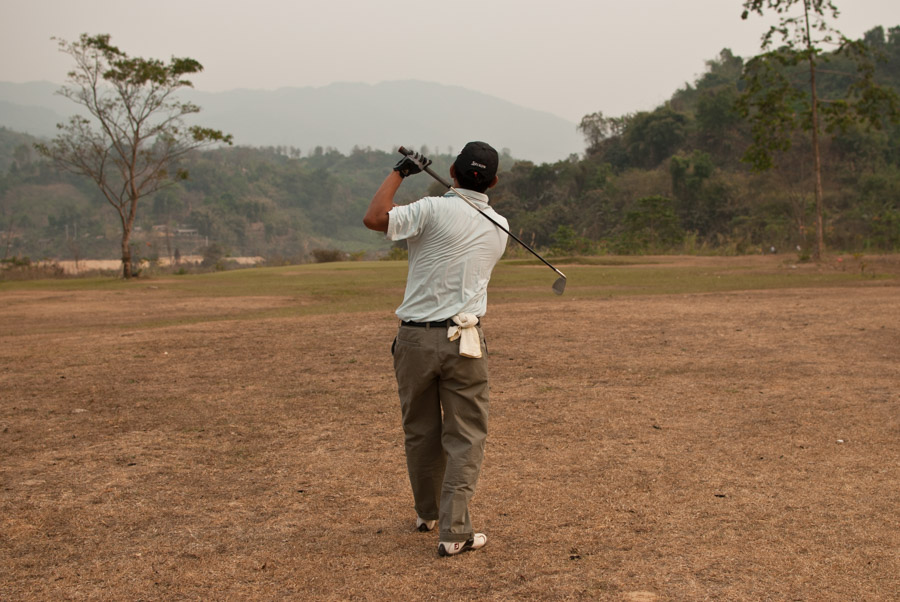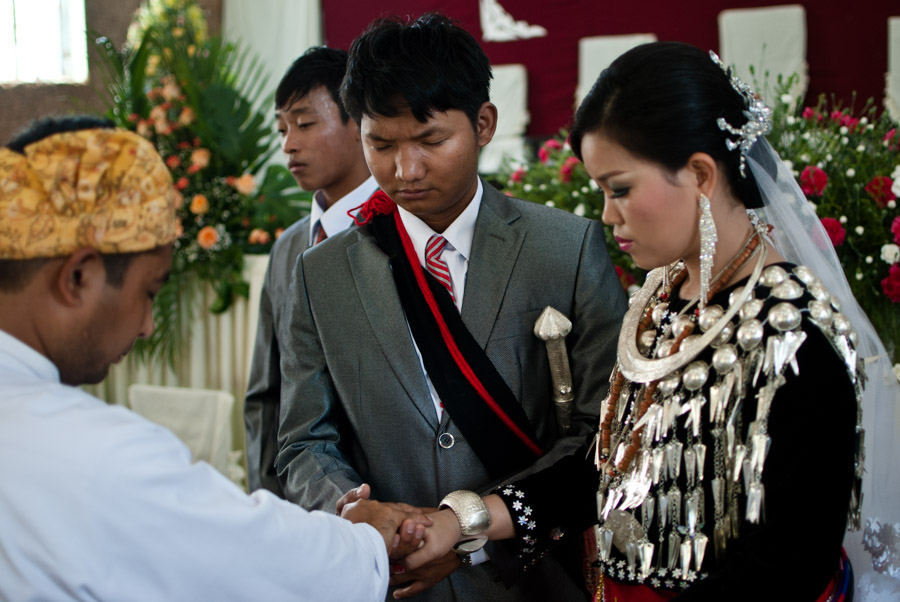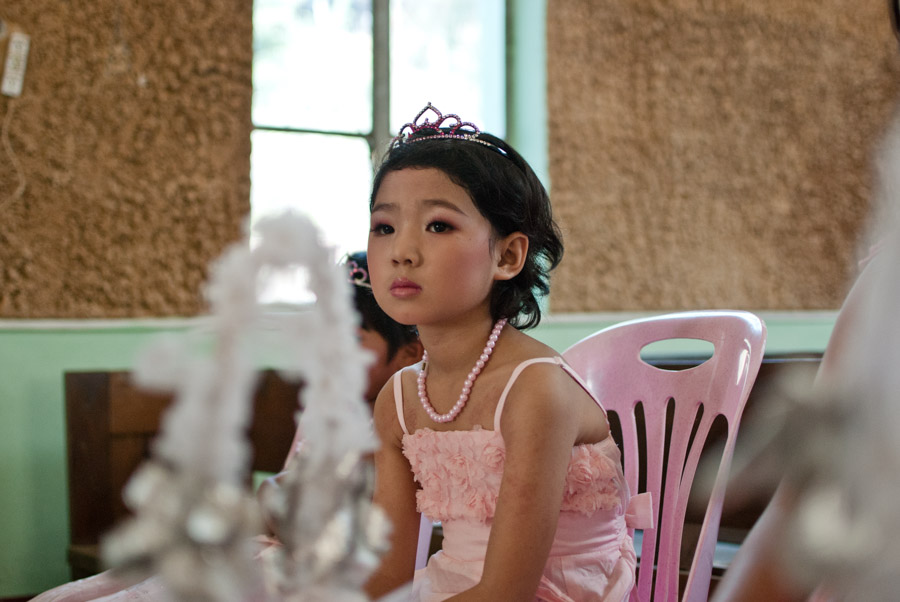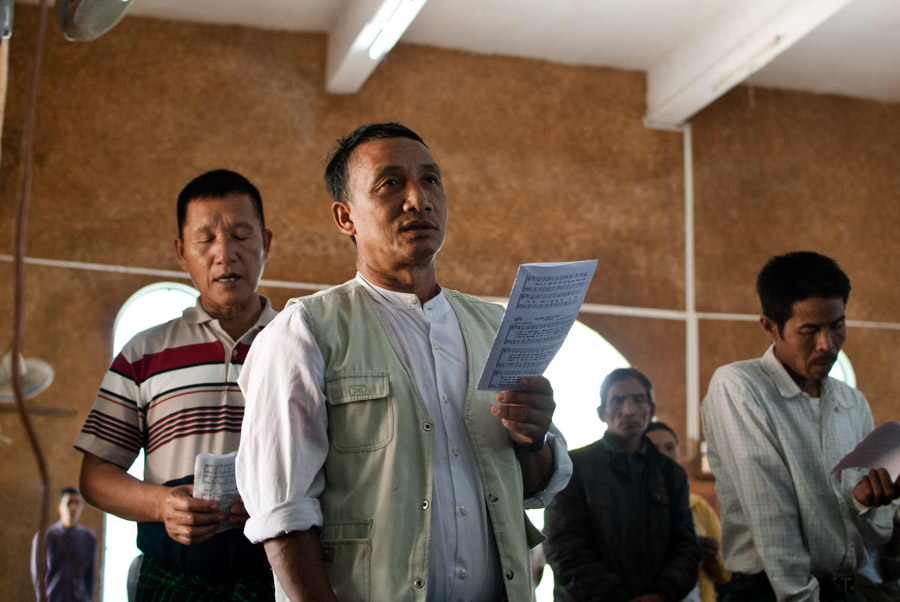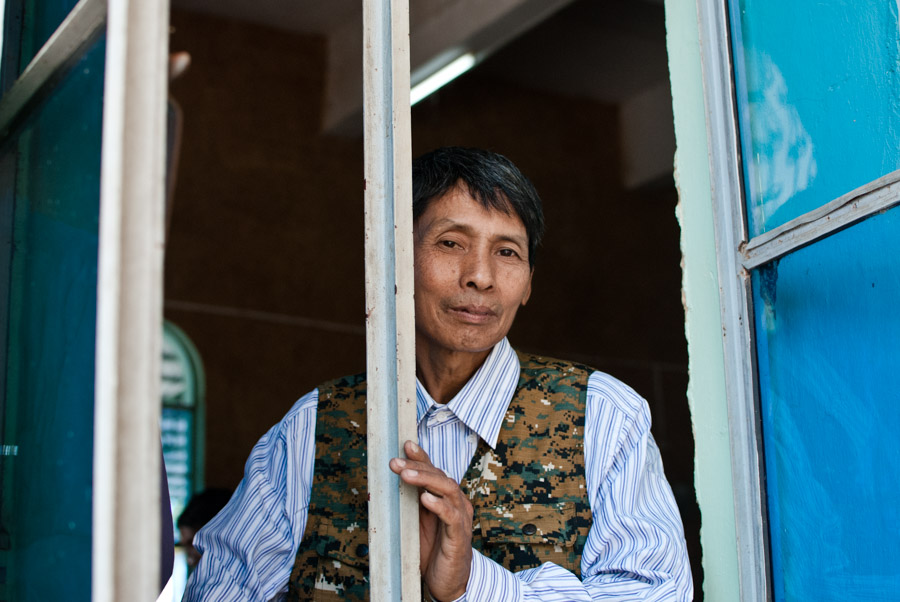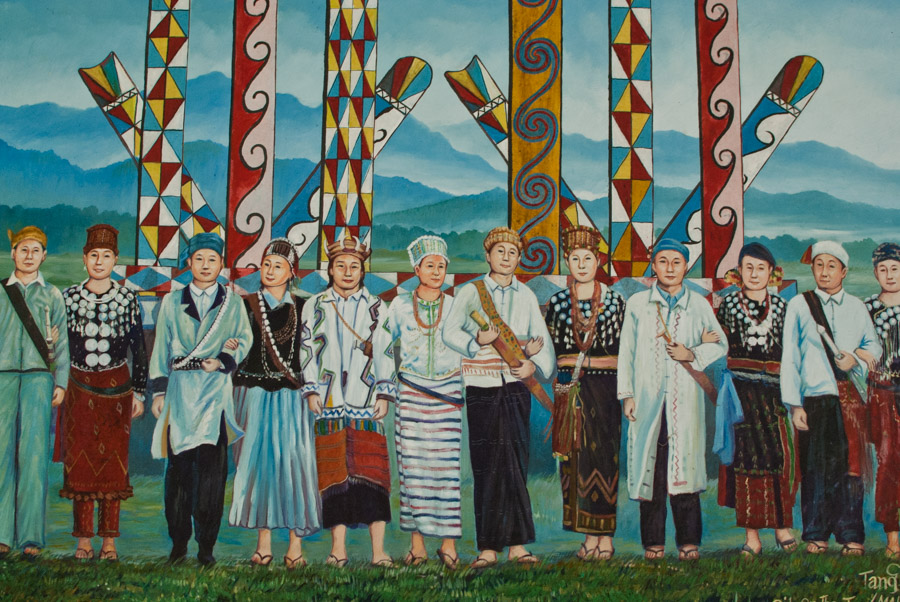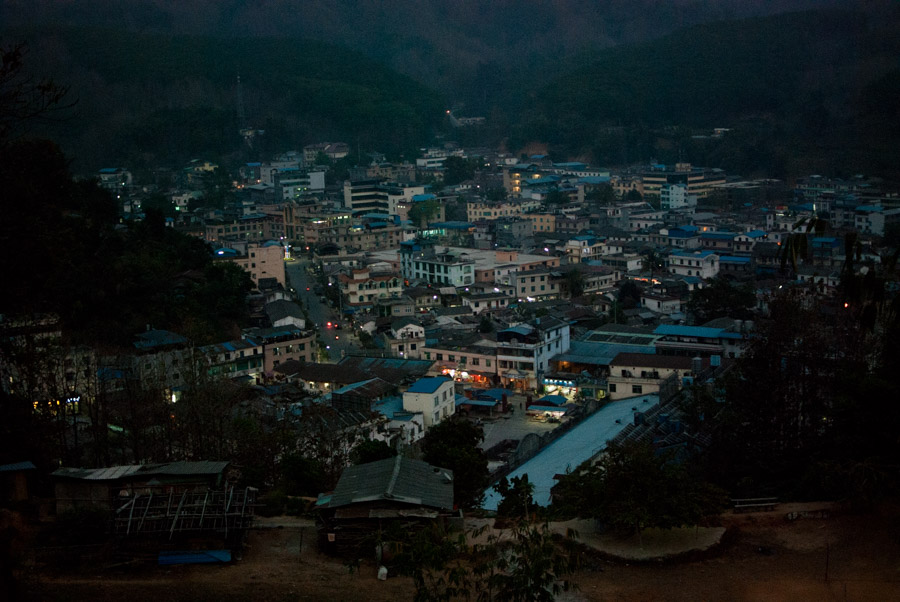Life behind the lines of Kachin state’s bloody ethnic conflict.
LAIZA, Myanmar — Stray dogs scurry across the fairway, the greens have seen better days and a civil war rages just 10 miles away. But here in the conflict-torn hills of northern Myanmar, the Laiza Golf Club (est. 2006) remains open for business.
This six-hole course — three more are planned — sprawls along a small river in rebel-held Kachin State, so close to the Chinese border that a sliced shot might land your ball in a different time-zone. The club house consists of a small sheltered area with benches, where scores are written up on a blackboard.
It’s an unlikely place to tee off, but for the leaders of the ethnic Kachin guerrilla force that’s fighting Myanmar’s powerful military, a few rounds is good for cementing relationships — and it soothes war-weary minds.
“Golf is a gentleman’s game,” says Col. Maran Zaw Tawng, the secretary of the Laiza Golf Club and a senior commander in the Kachin Independence Army (KIA). “When we play golf we learn to respect each other. You have to be silent while the others are taking their shot. If there are other things in your mind you’ll miss.”
Golf courses exist across Myanmar (formerly Burma), a legacy of British rule. Col. Maran first came across the game as a child in the Kachin State capital Myitkyina, where he would watch golfers playing at the local course. Laiza’s course, designed by Nay Min, a well-known Indo-Burman golfer from Myitkyina, was built to service the large influx of traveling businessmen and visiting officials from Myanmar’s government.
Soon, however, members of the KIA, and its political wing, the Kachin Independence Organization (KIO), developed a taste for the game. The golfer Nay Min was kept on to teach local commanders the finer points of driving and putting.
One convert of recent years is Laiza’s mayor, Maj. Kareng Naw Awn, who hits the links in a tan Nike polo shirt, slacks and white golf shoes. “I just play for friendship and relationships. If we play golf, my colleagues and I can understand each other better,” he says as he tees off from Hole No. 1, a 358-yard par 4, sending a shot hurtling towards the distant green.
When fighting broke out between the KIA and Myanmar’s forces last June — shattering a 17-year cease-fire and driving tens of thousands from their homes across the region — the golf club remained open to the public, for a fee of 1,000 Myanmar kyats (about $1.15) per game. But many KIO officers say they have had to scale back their golf habits due to the demands of the war. The club has also had to cancel its monthly tourneys.
For better or worse, the war has provided caddies: young Kachin girls displaced by the fighting, who wheel golf bags around to earn some spare change. “The Burmese troops attacked our village,” says Dau Nan, a 13-year-old in a floppy blue baseball cap, who makes 3,000 Myanmar kyat (around $3.70) for caddying an 18-hole game.
“Christianity is our key, the tone that unites us and binds us together. … It’s crucial for us.”
The relaxed pace on the links reflects the atmosphere at large in this border town of 7,500, the capital of the KIO’s autonomous zone in northern Myanmar. The jungle conflict has triggered an influx of displaced residents, but a surprising air of normality reigns in Laiza. Street-side barbecue restaurants do a bustling night-time trade. Rows of import-export shops hawk everything from Johnny Walker whisky to Chinese-made shampoo (not to mention golfing gear).
“The fighting is happening so close to Laiza, but all the civilians believe that the KIO soldiers can defend [the town], so they can just stay here like normal,” says Mayor Kareng Naw Awn back at his office, where bags of golf clubs are lined up outside the door.
The conflict led to a fall in cross-border tax revenues, but has allowed the KIO to restart tax collection in other areas — including the jade-mining mecca Hpakan — excluded under a 1994 cease-fire agreement. And, unlike many other parts of Myanmar, the lights in Laiza nearly never go out: the KIO’s statelet is well-served by its own hydropower facilities.
God in the time of war
Doi Seng, 27, and his 26-year-old fiancée Labang Mi May are two who have tried to preserve some sense of normality in wartime. Recently, the pair were married at the town’s small Baptist church, a white brick building sitting against a backdrop of wooded hills. Many Kachin were converted to Christianity by colonial missionaries in the late 19th and early 20th centuries.
After the ceremony, in which the couple recited their vows and the groom cut a wedding cake with his ceremonial sword, the happy couple exited the church to the strains of “Here Comes the Bride” played on an out-of-tune upright.
Khawng Lum, 35, one of the pastors presiding at the wedding, says the conflict has led to a renewal of faith among the Kachin. “Our spirituality has become a little bit more serious since before the war broke out,” he says. “Christianity is our key, the tone that unites us and binds us together. … It’s crucial for us.”
At a Sunday church service later in the week, worshippers — women in rainbow-hued tribal skirts, men wearing Western slacks and longyi (sarongs) — spill out into the car park surrounding the church. The arrival of displaced civilians from conflict zones has swelled church attendance by a third.
For nine months, the church has also maintained a wartime vigil, praying around-the-clock for an end to the conflict. Groups rotate between six small prayer rooms. Tu Lum, a 57-year-old KIA veteran volunteering for one of the prayer groups, has come for three days a week for the past eight months and says he will continue “as long as the fighting takes place.”
“We’ve been praying for nine months already — everyday, 24 hours,” Khawng Lum says.
Traditionally animists, the Kachin took readily to the gospel preached by colonial missionaries. The most revered is the Swedish-American missionary Ola Hanson, who was posted in northern Myanmar between 1890 and 1928. Hanson was the first to transcribe the Kachin language into Roman script, and provided a translation of the Bible and the Swedish hymns that are still sung in Kachin churches today.
In his book “The Kachins, Their Customs and Traditions,” published at the height of British rule in 1913, Hanson predicted a bright future for Myanmar’s minority peoples.
“The future of the hill tribes is bound up with the future of Burma,” he wrote. “The Burmans of the past have had their day, they have done their work, and are slowly but surely passing away. Burma is a melting pot where a new people with a new destiny is in the making.”
But things took a different turn. The ethnically Burman majority, tired of being oppressed under colonial rule, reasserted themselves after the British departed in 1948, fueling an unending string of civil wars along the country’s ethnic periphery.
For the Kachin, divided from the Burmans by language, religion and decades of suspicion, the prospect of a lasting settlement with the central government is remote. For some it’s not even desirable. “There are two forces fighting: one side are the evil forces, one side are the godly forces,” says the pastor Khawng Lum. “It’s better for us to separate away from the Burman majority and establish or build another country.”
Until then, life in Kachin goes on. Back at the golf course, Lum Hkawng, 38, is hanging his comrades out to dry. After just eight months playing the game, the ex-KIO administrator and Greg Norman fan has developed a powerful drive and an ice-cool putting game. “When I was a youth I used to play football. [Then] I saw [golf] on TV and got interested in playing,” he says.
As the players get set for their final trip around the six holes, the light is quickly fading into a roseate dusk framed by the darkening hills of China and Myanmar. By the time it’s dark the game will be over; then it will be back to town, and the burdens of the KIA’s long fight for autonomy.
[Published by GlobalPost, April 16, 2012]


